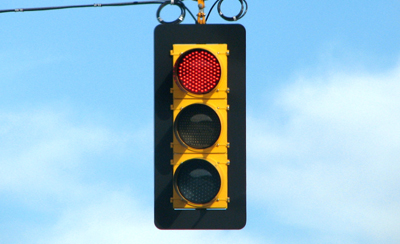Why Color Measurement Can Inspire the Light Industry
Lighting is a very important aspect of design. Both internal lighting such as ceiling lights, uplighting, and security lighting and external lighting such as street lights, traffic signals, and safety signals all make use of lighting technology and research While there are many methods for measuring and analyzing light, there are generally two methods for maximizing a light’s effectiveness. First, simply increasing the brightness of the light will make the light visible from further away and the extra ambient light will increase visibility in dark areas. Unfortunately, increasing the brightness of a light has many drawbacks which quickly overshadow any benefits. For example, brighter lights can dazzle drivers in the rain or if there is little other light in the area. Also, brighter lights do not increase visibility in foggy or smoky situations, because the light is diffused through due to air contaminants. Finally, brighter lights use much more electricity, leading to higher utility bills and added strain on the environment and its natural resources.
Next, light can be focused onto more reflective surfaces. This means that the primary light source can illuminate part of a dark area, while ambient light can be used to illuminate other areas. This is more efficient than simply increasing brightness, but it still does not solve the problems introduced by smoke, rain, and other factors such as color blindness. Also, reflective surfaces often need consistent refinishing, adding to the longterm costs of the lighting solution and, overall, providing little net benefit. Fortunately, with the development of light emitting diode (LED) lighting, designers now have more flexible lighting options. LED lights produce more light than do traditional incandescent and fluorescent lighting while also using less electricity. And, with their smaller physical size, LED lights can be installed in more locations than traditional lighting, giving developers extra options in creating lighting designs. However, simply installing more advanced lighting isn’t the optimum solution. Instead, designers and engineers first need to understand the lighting needs specific to each location,and then they can develop and implement a lighting solution which has been custom fit for that area. This light analysis can be conducted with devices such as a spectroradiometer, which is a special type of device that measures the spectral power of a light source. These readings ensure that the visible output of the light source matches the requirements of the location, and that the light is performing optimally. Finally, color information can be gathered from light sources and from light reflections off building materials using a device such as a colorimeter, and these readings can then be used to customize and to calibrate lighting. Some uses for colorimeters in lighting include:
Measuring available ambient lighting. During the day, many offices already have a free source of light: the Sun. By using colorimeters and by analyzing the light which is available to them, designers and engineers can place indoor lighting to augment, rather than to replace, the available daytime light. Research has shown that it is sunlight, not artificial light, which controls and calibrates out internal clocks. Thus, working with the Sun, rather than against it, can lead to healthier and happier employees which translates to less lost work due to fatigue and illness. Also, colorimeters can be used to calibrate indoor lighting to ensure that the light produced by these lights does not cause harmful glare which can distract and fatigue employees further.
Calibrating outdoor lighting. Outdoor lighting such as that found in parking lots is an essential part of modern life. By keeping parking lots and streets well lit, we can reduce incidences of crime and help people feel more safe. Unfortunately, most existing lighting solutions have two settings: on, and off. This means that, during the twilight hours, extra light is being produced and energy is being unnecessarily wasted. By using colorimeters to perform some testing, outdoor lighting can be more effective when necessary, and can go into power-save modes when not necessary.
Improving the accessibility and usability of emergency signage. Traditional fire exit signs use red lettering to indicate that they are to be used in emergencies. However, research has shown that red is less than optimal during fires and, thus, many of these signs have been replaced with green lettering. Similarly, many signs make use of colors which do not necessarily stand out in their environment, and which may not be as visible to colorblind people or people with diminished eyesight. Colorimeters can be used to determine the best colors and lighting type for these signs to ensure that they are helpful when they are needed most.
Regardless of the application, colorimeters are important not only for calibrating and setting up lighting and video equipment, but also for determining the lighting needs of a location in the first place. From ensuring that outdoor spaces are lit, and lit well, to making sure that signage is visible to a wider audience, colorimeters and the analysis they provide are an essential tool for engineers and designers.











